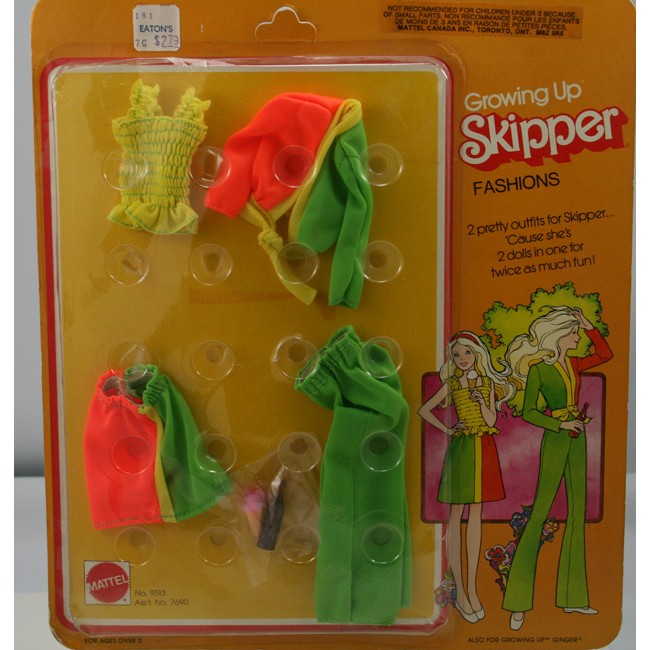

Ruth Handler watched her daughter Barbara play with paper dolls, and noticed that she often enjoyed giving them adult roles. The first Barbie doll was introduced in both blonde and brunette on March 9, 1959. This is an increase from the $950 million the brand sold during 2017. In 2020, Mattel sold $1.35 billion worth of Barbie dolls and accessories and this was their best sales growth in two decades. Sales of Barbie dolls declined sharply from 2014 to 2016. Writing for Journal of Popular Culture in 1977, Don Richard Cox noted that Barbie has a significant impact on social values by conveying characteristics of female independence, and with her multitude of accessories, an idealized upscale life-style that can be shared with affluent friends. Since its launch, Barbie has transformed the toy business in affluent communities globally by becoming a vehicle for the sale of related merchandise (accessories, clothes, friends and relatives of Barbie, etc.). īarbie and her best male friend Ken have been described as two most popular dolls in the world. Since 2017, the franchise has been moved over to streaming services. The brand has expanded into a long-running multimedia franchise since the late 1980s, including video games and CGI/computer-animated films, the latter which began in 2001, became originally available on home video formats and broadcast regularly on the Nickelodeon cable channel in the United States from 2002 to 2017. Mattel has sold over a billion Barbie dolls, making it the company's largest and most profitable line. Barbie has been an important part of the toy fashion doll market for over six decades and has been the subject of numerous controversies and lawsuits, often involving parodies of the doll and her lifestyle. American businesswoman Ruth Handler is credited with the creation of the doll using a German doll called Bild Lilli as her inspiration.īarbie is the figurehead of a brand of Mattel dolls and accessories, including other family members and collectible dolls.

(I had a very pretty primary school teacher who used to wear a dress just like Skipper’s.) Dying for her friend Ginger now, as these dolls are a great example of Mattel’s gimmick-mad days for Barbie back in the 70’s.Barbie is a fashion doll manufactured by American toy company Mattel, Inc. The socks are from her original outfit,) as I have a real thing for bandanna prints and remember them fondly from that time. I also got an NRFP outfit from the range, which is one of my favourites from it, (#9023. She also had a range of ‘growing up’ outfits, similar in packaging to the ‘Get Ups ‘N Go’ range, consisting of several pieces to make an outfit for her ‘little girl’ self and for her ‘teenage’ self.


She was sold all the way up through 1977, when the entire Barbie line got a ‘Superstar’ overhaul, (though the novel gimmicks still stayed on, such as moving arms, winking eyes and ‘kissing’ lips.) This is the 1975 first issue of the doll, with the shaggy, layered mane - very 70’s! She was certainly NOT recalled from toy shelves as many blogs insist. Although there was one male friend who had one and whose dad didn’t approve of him playing with dolls, and he would regularly confiscate it, (though oddly enough, never threw it away! He just hid it in weird areas of the house, so it became a fun daily game of ‘Find Skipper’ for my friend and I! We would find her in the linen closet, the laundry basket, under his parents’ bed, under the cushions in the sofa, in the pantry… once even in the fridge behind the milk!!! LOL ) …. She was just seen as a novelty, really, that was fun until you got bored with the whole ‘shape-shifting’ gimmick. Truth be told, I don’t remember any such controversy at all around the doll here in Australia at the time she was sold, as many of my friends had one. Many newspapers at the time ran articles about that ‘controversy’. The ‘curvy’ bit is what apparently outraged some women’s groups and parents in the United States, as she also grows a modest pair of breasts. Indeed, one of the most controversial was a doll that went through puberty with the mere flick of an arm (if only it were that easy!) Growing Up Skipper was released in 1975, and her mechanism is quite fascinating, with a soft rubbery upper torso that allows her to grow ‘slimmer, taller (three-quarters of an inch) and CURVY’. The mid 1970’s were indeed a strange time, and those times were just as strange at Mattel, where all sorts of weird and wonderful gimmicks (usually to do with some sort of sport or action movement) were foisted upon Barbie and her friends. No Skipper collection is complete without this gal IMO, as she symbolises a very interesting and unique period in Mattel history.


 0 kommentar(er)
0 kommentar(er)
